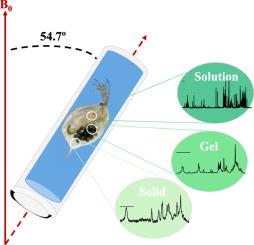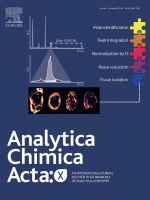Ex vivo Comprehensive Multiphase NMR of whole organisms: A complementary tool to in vivo NMR
Abstract
Nuclear Magnetic Resonance (NMR) spectroscopy is a non-invasive analytical technique which allows for the study of intact samples. Comprehensive Multiphase NMR (CMP-NMR) combines techniques and hardware from solution state and solid state NMR to allow for the holistic analysis of all phases (i.e. solutions, gels and solids) in unaltered samples. This study is the first to apply CMP-NMR to deceased, intact organisms and uses 13C enriched Daphnia magna (water fleas) as an example. D. magna are commonly used model organisms for environmental toxicology studies. As primary consumers, they are responsible for the transfer of nutrients across trophic levels, and a decline in their population can potentially impact the entire freshwater aquatic ecosystem. Though in vivo research is the ultimate tool to understand an organism’s most biologically relevant state, studies are limited by conditions (i.e. oxygen requirements, limited experiment time and reduced spinning speed) required to keep the organisms alive, which can negatively impact the quality of the data collected. In comparison, ex vivo CMP-NMR is beneficial in that; organisms do not need oxygen (eliminating air holes in rotor caps and subsequent evaporation); samples can be spun faster, leading to improved spectral resolution; more biomass per sample can be analyzed; and experiments can be run for longer. In turn, higher quality ex vivo NMR, can provide more comprehensive NMR assignments, which in many cases could be transferred to better understand less resolved in vivo signals. This manuscript is divided into three sections: 1) multiphase spectral editing techniques, 2) detailed metabolic assignments of 2D NMR of 13C enriched D. magna and 3) multiphase biological changes over different life stages, ages and generations of D. magna. In summary, ex vivo CMP-NMR proves to be a very powerful approach to study whole organisms in a comprehensive manner and should provide very complementary information to in vivo based research.


 求助内容:
求助内容: 应助结果提醒方式:
应助结果提醒方式:


